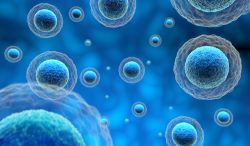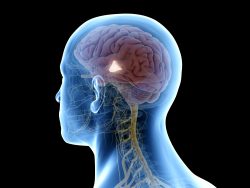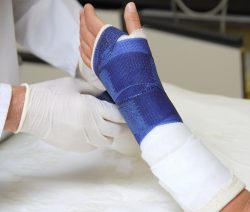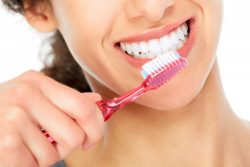Exposure to Nature Reduces Unhealthy Cravings
 New research led by the University of Plymouth has found that exposure to green spaces and nature is associated with lower cravings for cigarettes, alcohol, and unhealthy food choices. This is the first study to reveal that passive exposure to close green spaces is linked to not only lower frequency of cravings, but also the strength of those cravings.
New research led by the University of Plymouth has found that exposure to green spaces and nature is associated with lower cravings for cigarettes, alcohol, and unhealthy food choices. This is the first study to reveal that passive exposure to close green spaces is linked to not only lower frequency of cravings, but also the strength of those cravings.
This study builds on earlier research which suggested that exercising in nature can also reduce cravings. This new study demonstrates the same may also be true even irrespective of any physical activity.
The findings add to increasing evidence that points to the need to invest and protect green spaces within cities and towns. These investments help maximize public health benefits that people can afford. The current study also suggests the causality link of this needs to be better investigated.
The research is the first to study the relationship between people’s exposure to natural environments, experiencing negative feelings or emotions, and cravings for a range of appetite substances. The study involved academics from the School of Psychology with included support from the European Centre for Environment and Human Health at the University of Exeter.
It has been known that being outdoors in nature is associated to a person’s well being. However, the possibility of a similar link with cravings from just being able to see green spaces, adds a new dimension to the previous research. The study could have a range of possibilities for environmental protection programs and public health in the future.
For the study, the participants completed an online survey which explored relationships between a variety of nature exposure and cravings. It measured the proportion of green space which was located in a person’s residential neighborhood, the amount of green views that was seen from their home, their access to an allotment or garden, and also the frequency to which they visited public green spaces.
The results indicated that people who have access to an allotment or garden were associated with both reduced cravings strength and frequency. Residential views which incorporated more than 25% of green space showed similar responses.
The study additionally measured physical activity that was undertaken within the identical time frame as the cravings were assessed. This part of the study also indicated reduced cravings occurred irrespective of physical activity levels.
Cravings contribute to a host of health damaging behaviors such as excessive drinking, smoking, and the consumption of unhealthy foods. As a result, these cravings contribute to some of the most challenging global health issues of our time. This includes obesity, diabetes and cancer. Showing that more exposure to green spaces is associated with lower cravings can prove to be promising for future public and private programs and individual health.
To view the original scientific study click here: Natural environments and craving: The mediating role of negative affect.



 It was once thought that neurons and possibly heart cells, were the oldest cells in the human body. However, researchers have discovered that the mouse liver, brain and pancreas contain populations of proteins and cells with very long lifespans with some as old as neurons.
It was once thought that neurons and possibly heart cells, were the oldest cells in the human body. However, researchers have discovered that the mouse liver, brain and pancreas contain populations of proteins and cells with very long lifespans with some as old as neurons.

 Short bouts of exercise has been found to directly boost gene function which increases the connections between neurons in the hippocampus. This part of the brain is associated with memory and learning. Not only is exercise good for health, but according to recent research it can also help make you smarter!
Short bouts of exercise has been found to directly boost gene function which increases the connections between neurons in the hippocampus. This part of the brain is associated with memory and learning. Not only is exercise good for health, but according to recent research it can also help make you smarter!
 A team at the University of Illinois and the University of Pennsylvania created a new technique which uses flexible implantable bone stabilizing plates and stem cells to assist in faster healing of bone defects and large breaks. This new technique allows stem cells which are applied to break sites to experience a level of mechanical stress which they also do in developing embryos.
A team at the University of Illinois and the University of Pennsylvania created a new technique which uses flexible implantable bone stabilizing plates and stem cells to assist in faster healing of bone defects and large breaks. This new technique allows stem cells which are applied to break sites to experience a level of mechanical stress which they also do in developing embryos. A new discovery by scientists at the University of Nottingham indicates drinking a cup of coffee can actually stimulate brown fat. Brown fat is the body’s fat fighting defense which just might be the key to tackling diabetes and obesity.
A new discovery by scientists at the University of Nottingham indicates drinking a cup of coffee can actually stimulate brown fat. Brown fat is the body’s fat fighting defense which just might be the key to tackling diabetes and obesity. A new small scale controlled research trial, the first of its kind, has linked consumption of ultra processed foods to overeating and weight gain. People who eat these kinds of foods typically eat more calories when compared to eating a minimally processed diet.
A new small scale controlled research trial, the first of its kind, has linked consumption of ultra processed foods to overeating and weight gain. People who eat these kinds of foods typically eat more calories when compared to eating a minimally processed diet.
 A simple tweak to a night owls sleeping patterns could help with sleep/wake timings, better eating habits, improved morning performance, and a decrease in stress and depression. Night owls are people with late waking and sleep habits.
A simple tweak to a night owls sleeping patterns could help with sleep/wake timings, better eating habits, improved morning performance, and a decrease in stress and depression. Night owls are people with late waking and sleep habits. A new study conducted by researchers at the University of Bergen, Norway, have discovered a significant connection between good oral health and Alzheimer’s Disease. They determined that gingivitis has a very decisive role in whether someone develops this disease or not.
A new study conducted by researchers at the University of Bergen, Norway, have discovered a significant connection between good oral health and Alzheimer’s Disease. They determined that gingivitis has a very decisive role in whether someone develops this disease or not.